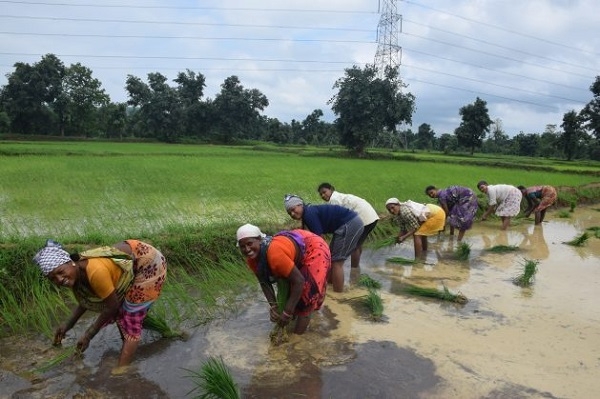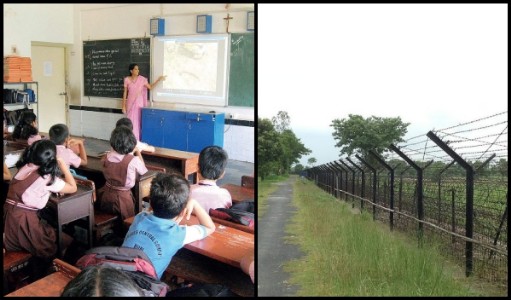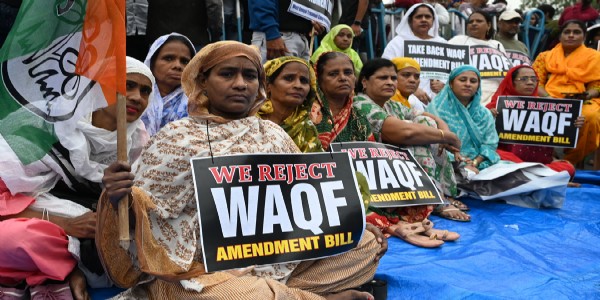Atmanirbhar Bharat Package- Part 4 : Sustaining the Farmer & Reviving Agriculture
Total Views | 32
Some of the measures introduced for the farmers and the agriculture sector have been discussed in the last article. But there are many more focused measures targeting agriculture and allied sectors announced by the Finance Minister in the presentation on ‘Atmanirbhar Bharat’.
One must dive deep into history to understand the plight of agriculture and farmers today. It is not a problem created in a day. Since independence our policymakers merely did lip service by calling us as an ‘agrarian nation’. Under the influence of the erstwhile USSR, Indian planning had a clear focus on heavy industrialization, thereby neglecting the agrarian sector. This neglect was experienced in terms of negligible investments in agriculture and related infrastructure. With the nominal investments and gradual division of land due to heredity, individual agricultural units became unviable pushing the farmers into serious distress. Some areas of our country also experiences epidemics of farmer suicides. Even in such conditions the sector improved in terms of production of food grains but compromised in terms of quality and actual returns to the farmers. The entire process of agriculture, right from procurement of seeds to selling of produce in the market, made the farmer dependent on external agencies, sometimes government – sometime private. This dependency shook the confidence of the farming community and created a gloomy image of the profession.

Though facing perpetual and multiple problems, agriculture sector remained largely less affected by the direct impact of COVID-19 and the lockdown. This pandemic presented a huge challenge to the entire global economy at large. Various sectors were adversely affected but in India agricultural activities were in action. The government seems to have taken the pandemic as an opportunity to introduce many reforms in the sector so as to convert it into a robust and enriching sector. The government measures seem to be a good combination of immediate, medium term and long term measures for the sector. Let us try to discuss a few of them.
With the target of doubling the farmer’s income by 2022, a positive step even during the lockdown time was upward revision of the Minimum Support Prices (MSPs). A sum of Rs. 74,300 crore was spent on Government Procurement of agricultural produce during these times. Under the PM Fasal Bima Yojana (Crop Insurance Scheme) claims worth Rs. 6,400 were settled, giving immediate relief to the distressed farmers.
In allied sectors, Animal Husbandry, Dairy, Fisheries, Apiary, etc. play a vital role in enhancing the supplementary income of the farmers. The measures regarding dairy have already been mentioned in the last article. Additionally, a new scheme to provide interest subvention of 2% per annum has been launched for the dairy cooperatives. Similarly, 2% interest subvention on prompt payment has been announced. This scheme will float Rs. 5000 crore additional liquidity benefitting 2 crore farmers. Similarly, procedural relaxations during COVID19 have been announced to benefit fisheries. The Pradhan Mantri Matsya Sampada Yojana worth Rs. 20,000 aims to fulfil the critical gaps in the fisheries value chain.
The National Animal Disease Control Programme worth Rs. 13,343 crore aims at 100% vaccination of 53 core animals like cattle, buffalo, sheep, goats, pigs, etc. Till date more than 1.5 crore bovines have been tagged and vaccinated. This program will help not only in improving the health and longitivity of the bovines but will also improve their milk yield and reproduction capacity, thereby improving the income level of the farmer. Similarly the Animal Husbandry Infrastructure Development Fund of Rs. 15,000 crore will improve dairy infrastructure and will also support private investment in the dairy processing. This will also give a boost to export of niche dairy products.
The plans to improve the infrastructure gap in agriculture by implementing the Rs. 1 lakh crore Agri Infrastructure Fund for farm-gate infrastructure for farmers. The infrastructure gap in terms of Warehouses, Cold Storages & Chains and other Post-Harvest Management Infrastructure in the vicinity of the farm gate will be addressed through this fund. This will result in more value addition at the farm gate level and will enhance the farmer’s opportunities to increase the income.
India is known for its diversity. This diversity is also expressed in terms of Micro Food Enterprises (MFE). Every region, every city has its own delicacy. Though these MFEs have a huge business potential, most of them operate in the informal sector and need a handholding support to scale up. The Rs. 10,000 crore scheme for formalization of MFEs is a welcome step towards it. Along with the scheme the vision of the Hon. PM, ‘Vocal for Local with Global outreach’ will surely as a propellant for driving this scheme to success.
India is a home to a variety of herbal medicinal species. It has got a huge export potential. The National Medicinal Plants Board (NMPB) has already supported 2.25 lakh hectare area under cultivation of medicinal plants. With an outlay of Rs. 4,000 crore, 10 lakh hectare of land will be brought under herbal cultivation. This will lead to Rs. 5,000 crore income generation for our farmers.
Apiary (Bee keeping) is an excellent livelihood activity for farmers. It also helps in increasing the yield and productivity of crops by the way of pollination. Rs. 500 crore outlay for the sector will help in bridging the gaps of the sector and improve the production and also help in exports. In turn it will provide quality honey to consumers and increase the income of 2 lakh beekeepers. Other reforms like the Amendment of Essential Commodities Act, Agriculture Marketing Reforms, and Agriculture Produce Price and Quality Assurance will empower the farmer and ensure a worthy price for his / her produce.
All in all the clear focus on enhancing the investments in agricultural infrastructure, bridging the gaps in the agricultural value chain and creation of an enabling environment for animal husbandry, fisheries, dairy and other allied activities is clearly aimed at enhancing the incomes of the farmer. The challenge of COVID 19 is being converted into an opportunity to rectify the long standing problems of Indian Agriculture. These measures will not only sustain the farmers in the short run but will also revive the overall agriculture in the long run.







